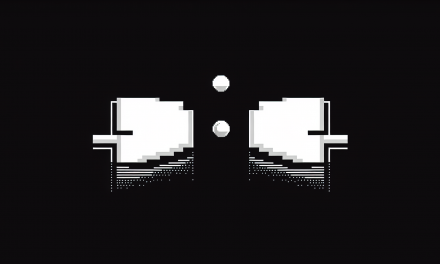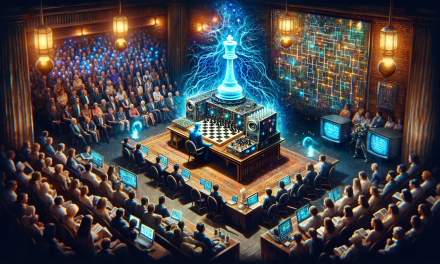Every few years, a story emerges that makes us rethink what’s possible when clever minds meet tight budgets. India’s Mars Orbiter Mission—lovingly nicknamed Mangalyaan, which simply means “Mars craft” in Hindi—is one of those stories. Picture this: in 2014, while NASA was spending nearly $700 million on their Mars mission, India’s space agency pulled off the same feat for just $74 million. That’s less than the budget of most Hollywood blockbusters, and definitely less than what you’d spend on a decent parking garage in Manhattan.
But this isn’t just a tale about penny-pinching in space. It’s a masterclass in creative problem-solving, resourcefulness, and the kind of innovative thinking that every coder, maker, and problem-solver can learn from. Let’s explore how India’s space scientists turned constraints into superpowers, and what this teaches us about approaching our own impossible-seeming projects.
The Gravity of the Challenge
Imagine you’re trying to throw a paper airplane from your bedroom window to land perfectly on a moving bicycle three neighborhoods away. Now imagine that bicycle is Mars, it’s 140 million miles away, and you only get one shot. Oh, and your paper airplane needs to survive the journey for 300 days, dodge cosmic radiation, and still have enough battery power to take photos when it arrives.
This is essentially what the Indian Space Research Organisation (ISRO) set out to do. They wanted to send a spacecraft to Mars orbit—something only NASA, the European Space Agency, and the Soviet Union had successfully accomplished before. The catch? Their budget was roughly what NASA spends on coffee and donuts in a year. (Okay, that’s an exaggeration, but you get the point.)
The challenge wasn’t just about money—it was about rethinking every assumption about how space missions “should” work. Like debugging a program that everyone else has given up on, ISRO’s team had to find elegant solutions hiding in plain sight.
The Art of Elegant Constraints
Here’s where things get interesting from a coder’s perspective. When you don’t have unlimited resources, you’re forced to think differently. You can’t just throw more servers at a slow website or buy a faster computer to compile your code quicker. You have to get creative.
ISRO’s engineers faced a classic constraint: they couldn’t build a rocket powerful enough to send Mangalyaan directly to Mars. Their Polar Satellite Launch Vehicle (PSLV) was like trying to use a slingshot when everyone else had cannons. So what did they do? They turned this limitation into a feature.
Instead of one big push toward Mars, they designed what’s called a “slingshot trajectory.” Think of it like a video game where you can’t jump high enough to reach a platform, so you find a series of smaller jumps that get you there instead. Mangalyaan was launched into Earth’s orbit first, then used multiple loops around our planet to build up speed before finally breaking free toward Mars.
This approach wasn’t just cheaper—it was actually quite elegant. Like writing a clever algorithm that uses less memory by being more thoughtful about data flow, ISRO’s route was longer but ultimately more efficient given their constraints.
Building Smart, Not Big
One of the most fascinating aspects of Mangalyaan was how the team approached spacecraft design. While other Mars missions resembled high-tech laboratories packed with expensive instruments, India’s orbiter was more like a carefully designed smartphone app—focused, efficient, and doing exactly what it needed to do without any bloat.
The spacecraft carried just five scientific instruments, compared to the ten or more on typical Mars missions. But here’s the clever part: those five instruments were chosen to work together perfectly, like a well-orchestrated team of functions in a program. The methane sensor could detect possible signs of life, the color camera could provide context for what the other instruments were measuring, and the thermal imaging system could map the planet’s surface temperature variations.
The engineers also made smart choices about power management. Mars is about twice as far from the Sun as Earth, which means solar panels receive much less sunlight. Instead of building massive, expensive solar arrays, they designed the mission to be incredibly power-efficient. It’s like optimizing your code to run smoothly on an older computer instead of requiring users to buy new hardware.
The Innovation of Iteration
Perhaps the most valuable lesson from Mangalyaan is how ISRO approached testing and validation. With limited resources, they couldn’t afford to build multiple backup systems or run extensive ground tests for every component. Instead, they relied heavily on computer simulations and borrowed a page from the software development playbook: rapid iteration and learning.
The team built detailed virtual models of their spacecraft and ran thousands of simulations to predict how it would behave in different scenarios. When they found problems in these digital tests, they could fix them quickly and cheaply—much like catching bugs in your code during development rather than after deployment.
They also practiced what we might call “graceful degradation”—designing systems that could continue working even if some components failed. The spacecraft’s communication system, for example, had multiple backup modes. If the high-speed data transmission stopped working, it could fall back to slower but more reliable methods. Just like how a well-designed website can still function on a slow internet connection, Mangalyaan was built to succeed even when things didn’t go perfectly.
The Power of Passionate Problem-Solvers
Behind every great technological achievement are people who care deeply about solving problems. What made Mangalyaan special wasn’t just clever engineering—it was the team’s infectious enthusiasm for the challenge. The mission’s project director, M. Annadurai, often spoke about how the constraints actually energized the team rather than discouraging them.
This mirrors something many programmers experience: some of your best code emerges when you’re working within tight limitations. Maybe you only have 100 lines to solve a problem, or you need to make something work on devices with limited memory. These constraints force you to think more carefully, to find the essence of what you’re trying to accomplish.
The ISRO team also embraced what we might call “productive stubbornness.” When other space agencies said certain approaches wouldn’t work, the Indian engineers said, “Let’s find out for ourselves.” They questioned assumptions, tested alternatives, and weren’t afraid to try unconventional solutions.
Lessons for Every Creator
So what can we learn from India’s Mars mission that applies to our own projects, whether we’re building apps, starting businesses, or just trying to solve everyday problems?
First, constraints can be creative catalysts. When you can’t solve a problem with brute force or unlimited resources, you’re pushed to find more elegant solutions. Next time you’re faced with limitations—whether it’s a tight deadline, a small budget, or technical restrictions—try reframing them as design parameters rather than obstacles.
Second, focus on what matters most. Mangalyaan succeeded not because it did everything, but because it did the right things exceptionally well. In your projects, identify the core functionality that truly matters and make sure that works perfectly before adding bells and whistles.
Third, iteration and simulation are your friends. The more you can test ideas cheaply and quickly—whether through prototypes, mockups, or just thought experiments—the better your final product will be. Don’t wait until everything is perfect to start testing your assumptions.
Finally, never underestimate the power of passionate problem-solving. When you genuinely care about the challenge you’re facing, you’ll find creative solutions that others might miss. The best technology often comes not from the biggest budgets, but from teams who care deeply about making something work.
When Mangalyaan successfully entered Mars orbit on September 24, 2014, it didn’t just put India on the interplanetary map. It proved that with enough creativity, persistence, and thoughtful engineering, even the most ambitious dreams can fit within realistic budgets. Sometimes the best way to reach for the stars is to embrace the constraints that keep your feet on the ground—at least until you’re ready to launch.








